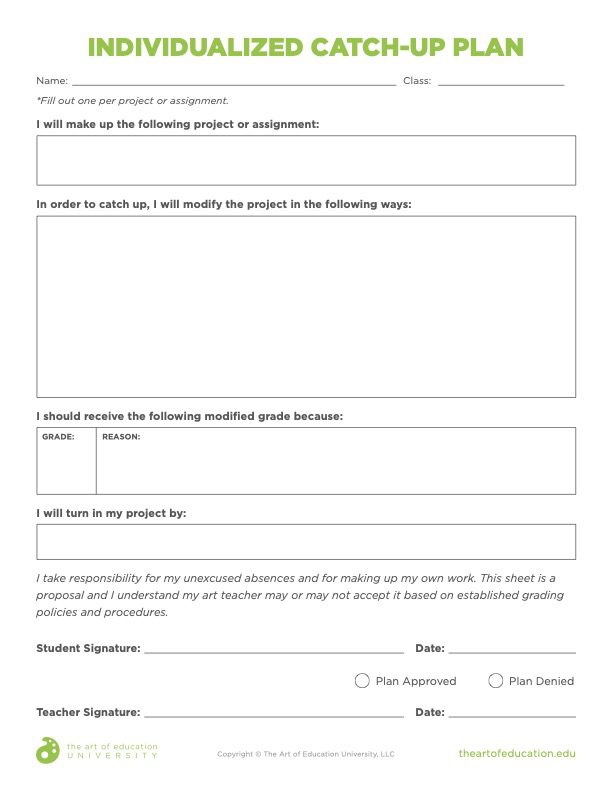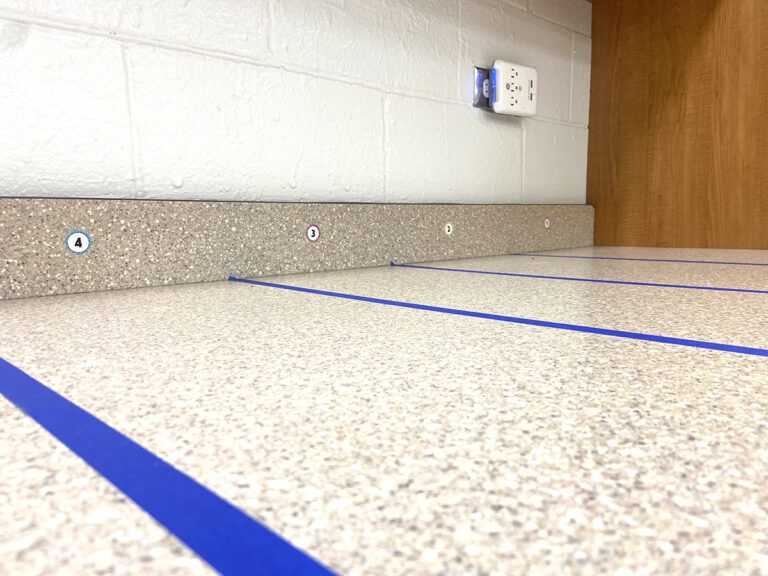Note: Follow district and school policies regarding absenteeism and grading.
Have you ever had a student who was absent from class more often than present? If the answer is a resounding “yes,” you’ve got yourself a student with chronic absenteeism! According to the Department of Education, students are chronically absent when they miss 15 days or more per school year. With one in six students across the United States chronically absent, most teachers in the U.S. encounter this issue every year.
When students are chronically absent, it can be very difficult for them to catch up and succeed in art class, especially since art units and projects can last several days or weeks. Frequently absent students usually have to make up work from every class and art class is usually low on the priority list. However, there are ways to proactively hinder chronic absenteeism. You can also implement effective systems to support students when they return to art class. Keep your artists from falling behind and save yourself from added stress by employing the strategies below.
Before we dive in, check out how Paula Liz and other art teachers like you organize work for absent students!
Here are seven proactive strategies to curb chronic absenteeism.
1. Make the art room a place students want to be!
If students enjoy coming to class, they are more likely to attend regularly.
Try these three tips to make your classroom a place to look forward to:
- Align art projects with students’ interests, experiences, and cultures to increase engagement.
- Be genuinely happy to see your students when they arrive at your door! Greet them, ask them how they are doing, and call them by their name. When they are absent, tell them you missed them in class!
- Incorporate brain breaks and games to make art fun and different from their core classes.
2. Establish clear expectations.
Students need to know what you expect from them when they’re absent. How will they find out what they missed? How many days do they have to make up the work? Do you expect them to catch up on sketchbook assignments or daily bell ringers? There should be no surprises regarding expectations around missing work. Be sure to set these expectations at the beginning of the year and continually review them so everyone is on the same page.
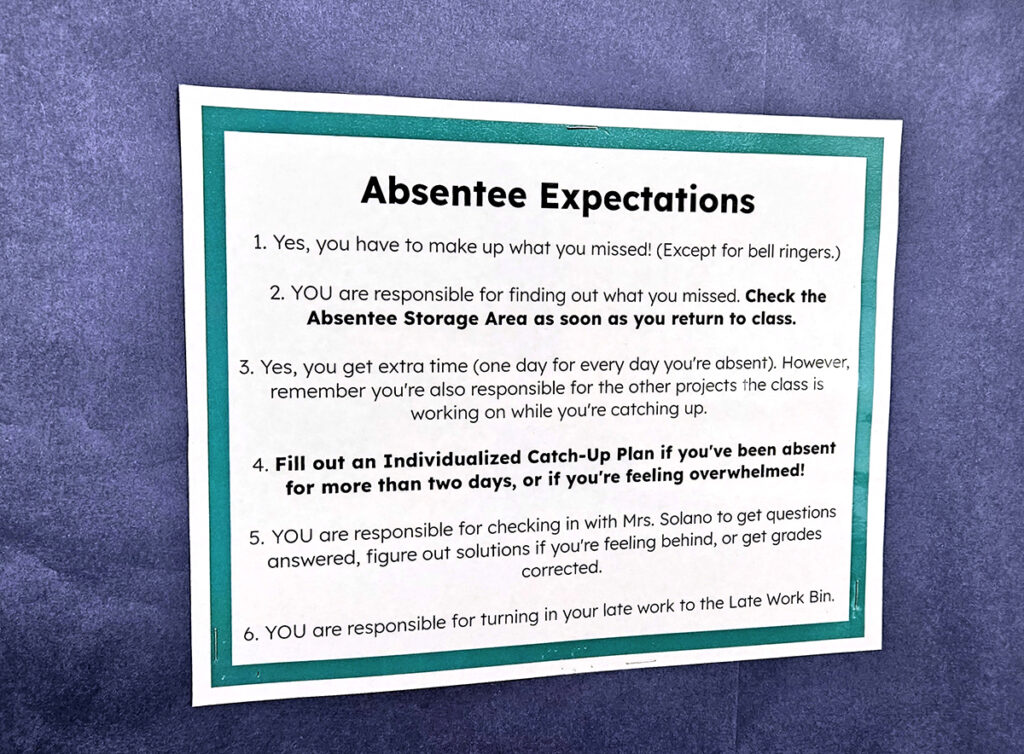
3. Collaborate with parents and guardians.
When students miss class, communication with their parents or guardians is vital. Caregivers and families can be a huge support in ensuring work gets completed and students come back to class as soon as possible. It also shows administrators you are doing everything you can to help. While it may take some work up front, make an email template you can customize and send out when students are absent. Include your expectations, missed assignments that week, and how they can assist you in supporting their student. Select one day a week to BCC all parents of students who were absent. Parents and guardians will appreciate you taking the time to keep them informed.
4. Put assignments online.
In today’s age of digital technology, you probably already have this one set up! All you need to do is make it a little more geared toward your chronically absent students. Make sure your website or digital platform is set up by day so students can easily find what they missed. Your platform can include step-by-step video or photo tutorials, links to resources, and short videos or written instructions. For advice on how to implement online tutorials, check out the Pack, Flipping Your Classroom Basics, in PRO Learning.
5. Set up an area for absent students.
In your classroom, have an area dedicated to papers and supplies absent students will need when they return to school. If the area is easily accessible and you or a responsible student helper are able to maintain it, absent students will be more self-sufficient with their makeup work. Also, make it a part of the established class routine for students to grab the items when they come back after they’ve been gone.
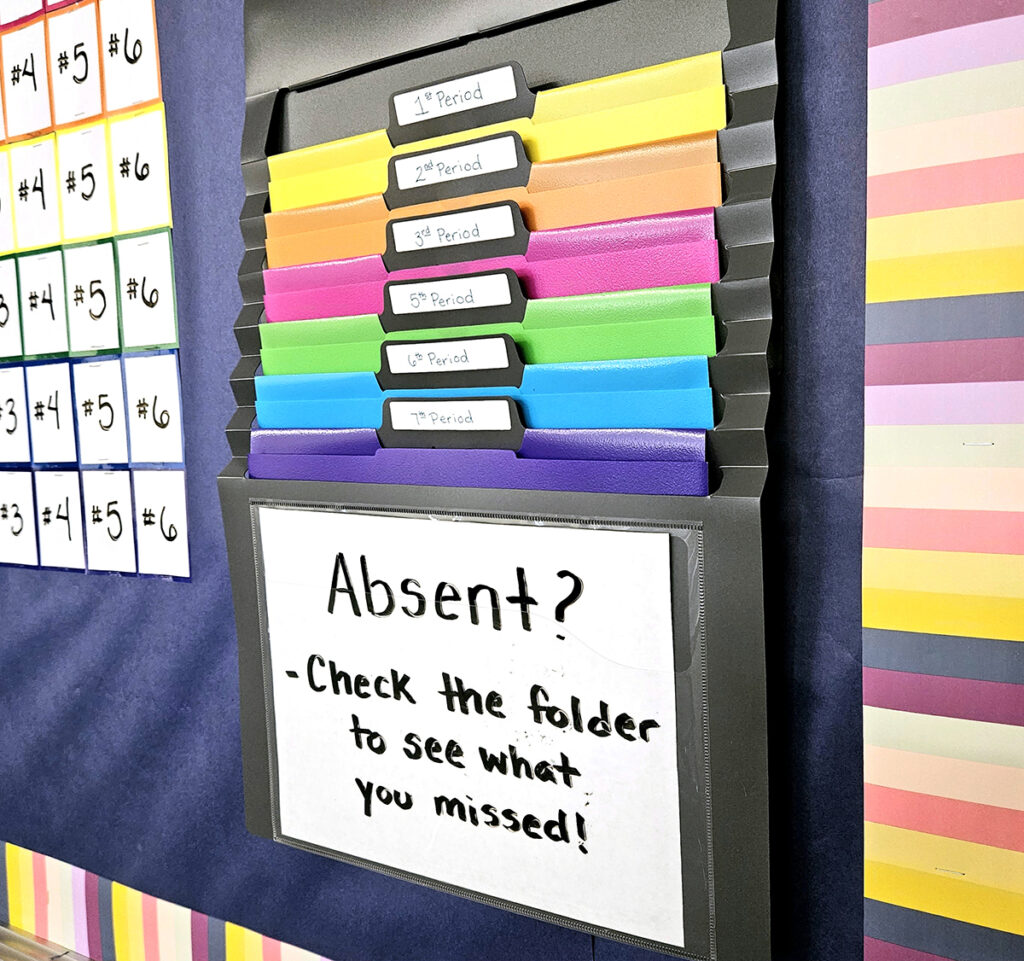
Here are four systems to get chronically absent students caught up.
When a student who has been away from school for a while returns to the classroom, they’re probably overwhelmed with the amount of catching up they have to do. As a teacher, you’re probably eager to get them caught up as well. Discover four systems below that you can implement to minimize everyone’s stress levels.
1. Understand the root causes.
There are many reasons why students miss school for extended periods of time. They or a family member could be experiencing health problems. Students may have instability in their family or living situation, mental illness, or unreliable transportation. Unfortunately, sometimes students are victims of bullying at school or may just have an extreme dislike for school. Sometimes students will tell you their personal reasons, and other times, they’ll want to keep it private or talk to someone else. Either way, always approach the topic with empathy because you never know what students are going through. Listen to their concerns about their chronic absenteeism, try to understand their perspective, and offer appropriate solutions where you can. Put them in contact with other adults who can support them, like their administrator, the school counselor, or a peer mentor. Let them know you are here to help, even if it means just being a listening ear!
2. Plan flexible lessons with adjustable deadlines and digital options.
Is it more important for students to turn in an assignment on time, or is it more important they take the time to learn valuable skills and turn it in late? When students repeatedly miss deadlines and aren’t given an opportunity to catch up, they are more likely to give up on the rest of the school year.
Students with chronic absenteeism get overwhelmed when there are long projects to complete. Relieve the pressure by offering alternatives. Can a shorter project allow them to demonstrate the same skills they would need to complete the longer project? If yes, plan ahead with a few scaffolded variations so you don’t have to scramble to come up with a revised assignment on the spot.
One of the biggest difficulties art teachers face with chronic absenteeism is having to teach the same lesson over and over again to the students who missed the original. Recording all of your lessons and demonstrations may take a little bit of setup time, but once it becomes a part of your normal routine, it becomes quicker and easier. Your students will have videos they can watch on their own time while you carry on working with the rest of the class. Work smarter, not harder!
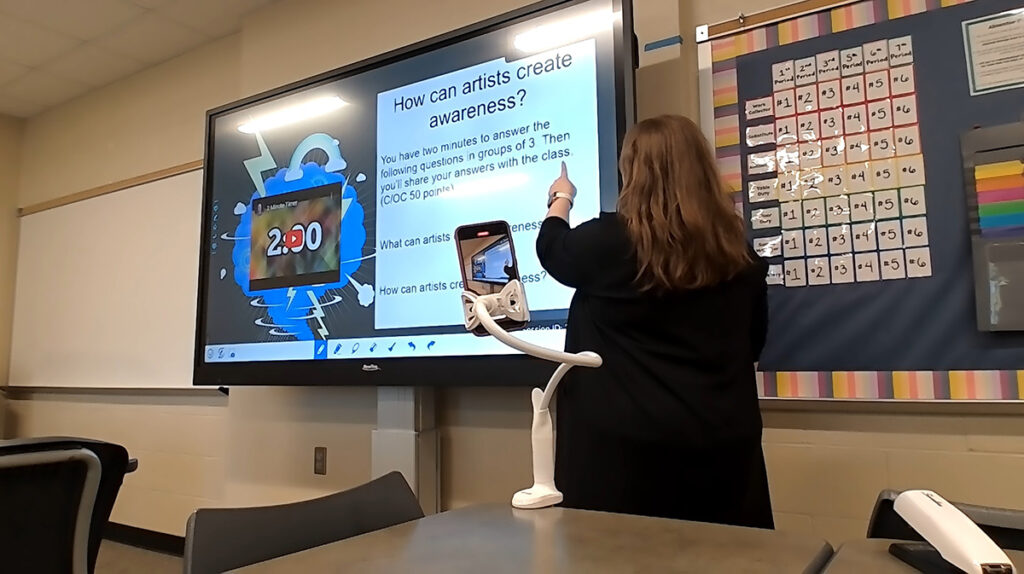
3. Create individualized catch-up plans.
Not all students’ circumstances are the same, so a specific catch-up plan for one student may not work for another. Work with the students individually to create a plan that outlines their missed assignments, timelines for completion, and any additional resources or support they require. Download the catch-up plan below to streamline the process.
4. Establish peer tutors.
Peer tutoring has many benefits for both the tutor and the tutee. When students teach their peers, it reinforces their own understanding of the concepts and gives them an opportunity for leadership. The student they are tutoring gets to make connections with their classmates while they learn. The teacher is able to monitor the tutoring session and assess both of the students’ understanding of the content.
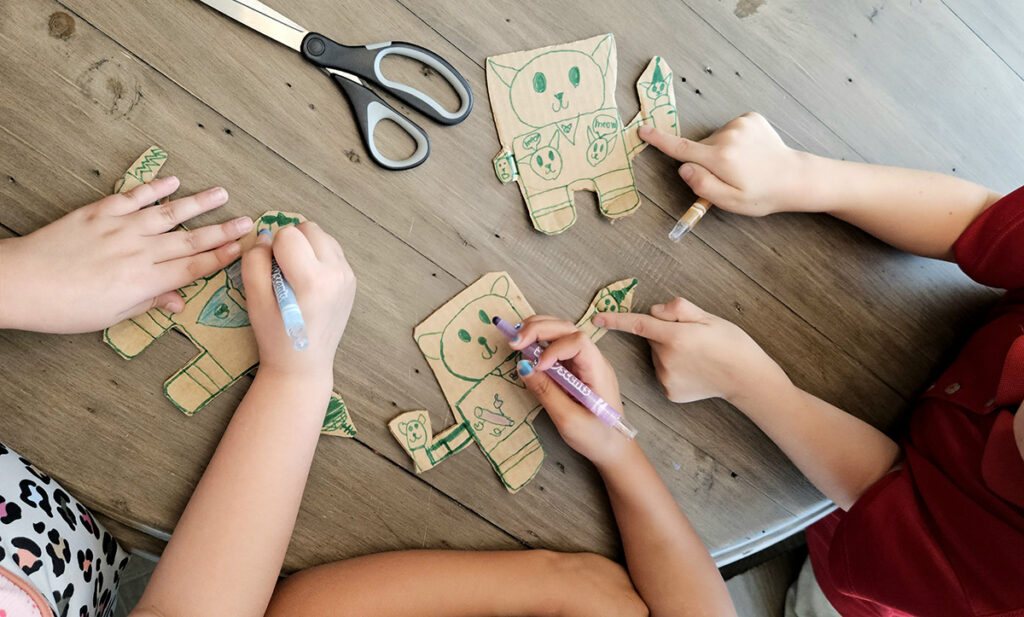
Addressing chronic absenteeism requires a proactive and empathetic approach from art teachers. Create a welcoming environment, establish clear expectations for absences, and formulate engaging projects and lessons. If students have more frequent absences, collaborate with parents or guardians and offer flexible assignments and deadlines. Make sure you have a plan for success within the classroom once students return to school. Create individualized catchup plans and a special storage area for absent students to increase ownership. Record and put assignments online and establish peer tutors to free up your energy and attention during class. By implementing these strategies, students can catch up on missed assignments and not miss out on their artistic growth!
What is still challenging for you when students miss class?
Share a strategy that has helped you handle student absences.
Magazine articles and podcasts are opinions of professional education contributors and do not necessarily represent the position of the Art of Education University (AOEU) or its academic offerings. Contributors use terms in the way they are most often talked about in the scope of their educational experiences.

